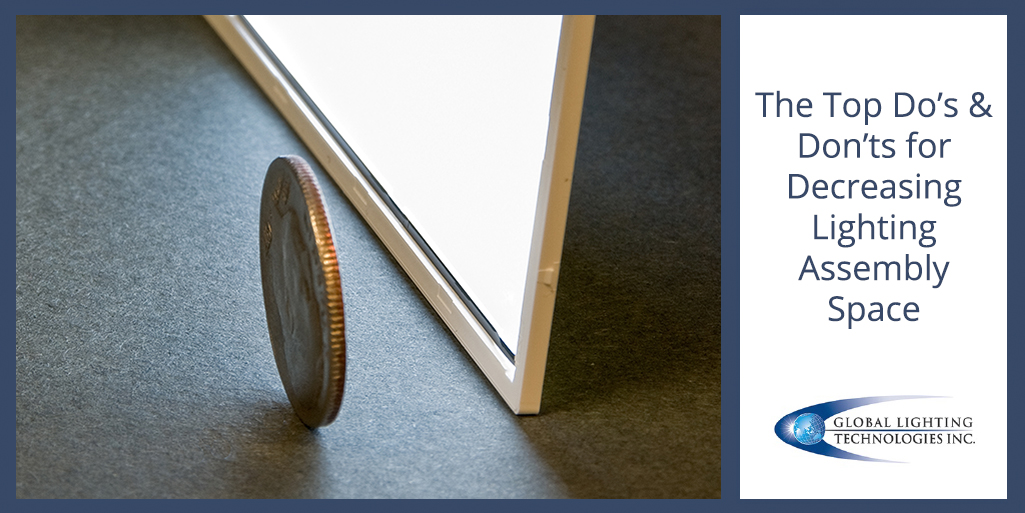
How to Minimize Your Illumination System Assembly Space
If you’re looking to decrease the assembly space required for your illumination system, you’re not alone. Many of our customers experience the same dilemma, and there are a variety of ways you can go about achieving your goal. Check out the top do’s and don’ts for nailing your space requirements.
- DO limit thickness. One of the first places to start is by reducing the thickness of the light guide. However, one thing to watch for when using thin light guides is the potential to decrease lighting efficiency. Generally, proper design helps you avoid this issue.
- DON’T use LEDs in the illuminated area. LEDs should be placed outside of the visible area to achieve and maintain light uniformity. You shouldn’t have to sacrifice uniformity to reduce lighting assembly space.
- DO utilize thin films. Thin films correlate to decreased assembly spaces. It’s important to understand the potential side effects, though. While a thin diffuser may come with reduced diffusive properties, light uniformity can still remain high with well-designed extraction features. With thin back reflector films, the cost of your system may go up, or conversely, efficiency can go down. Either way, it’s an acceptable trade for the reduced thickness.
- DON’T use LEDs larger than the light guide. Your LEDs should never be larger than the light guide. The LED output cone should always be equal to or thinner than the light guide.
- DO use other small components. Besides the light guide and the films, there are other components you can use to decrease assembly space. For instance, a flex circuit can be used instead of PCB, along with tiny LEDs and LED components. Once again, good design work will allow you to achieve the desired brightness and uniformity.
- DO reduce transition area. You can also reduce the transition area needed for your LEDs. By increasing the number of LEDs used, you remove dim areas between each LED, thereby decreasing the transition area. Additionally, by adding lensing features to the edge of the light guide, you can minimize the transition area without affecting light uniformity.
- DON’T risk light guide integrity. If you’re unable to maintain the integrity of the assembly space and light guide, then it’s possible you have reduced the size by too much. A certain thickness and size are required to hold everything in place and maintain alignment.
- DO source good materials. Using different materials within the lighting assembly space can reduce its thickness or offer other benefits. For instance, using metal as opposed to films may allow rigidity into the system without adding significant thickness. And, using polycarbonate instead of acrylic for the light guide itself can prevent fracturing as thickness decreases.
Do you need help decreasing lighting assembly space for your illumination system? Contact our lighting experts today.